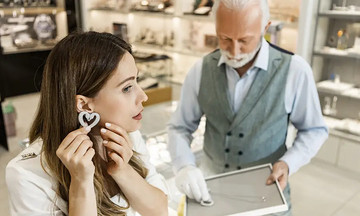25-year-old Christopher from Staffordshire, England, started getting lip fillers at 17. "I've spent half a house deposit on this procedure," he said.
He described the post-injection swelling as addictive. However, years of filler abuse caused his lips to become oversized and his face to swell. He underwent four rounds of dissolving injections to return to normal.
 |
Christopher Sharratt's altered appearance before 2021. Photo: @chrissharratt |
Dr. Cali Estes, a cognitive behavioral therapist in the US, explains that while fillers aren't chemically addictive, they can be psychologically addictive. She calls this "aesthetic blindness," where the brain quickly adapts to the change, leading to the desire for more injections.
"Each injection provides a temporary confidence boost, and the brain starts chasing that feeling of satisfaction," Dr. Estes said.
The turning point came during the Covid-19 lockdown when Christopher couldn't get fillers. "For the first time, I looked back at old photos and thought I'd treated myself terribly," he recalled.
The process of dissolving the filler was painful. This experience highlighted for Christopher the gaps in cosmetic regulations in England. He believes clinics rarely warn clients about long-term risks like filler migration or permanent skin stretching. "There needs to be stricter regulation. No 17-year-old should be allowed to get fillers," he emphasized.
 |
Christopher Sharratt's current appearance after stopping filler injections in 2021. Photo: @chrissharratt |
Dr. Estes warns about the medical risks of fillers, including blindness, which are especially dangerous for those with body image issues or addictive tendencies.
Now filler-free, Christopher feels more confident. He shared that people are more open and approachable toward him. He hopes his story raises awareness of the risks of cosmetic procedures and encourages stricter regulations.
Minh Phuong (Newsweek)












